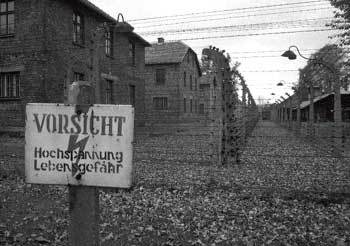Even Auschwitz Is Transformed into Art in Their Hands
Even Auschwitz Is Transformed into Art in Their Hands
Posted October. 11, 2002 23:08,

It is not a new effort to aesthetically transform the labor camp. Already in the West, writers and artists have consistently made efforts to overcome the unprecedented inhumane event in history. Right after the World War II, survivors of the Holocaust tried to make the world understand the horrible nature of it by telling their stories. These days, on the other hands, as more and more survivors are dying, people are concentrating more on the artistic transformation of the Holocaust, than on the dispersion of the truth. But, other than this, there is no difference.
But, numerous questions have frustrated those efforts, the questions such as Is it ethically right to aesthetically treat the genocide?, How could we artfully depict 3,000 people dying simultaneously in a gas chamber? Elle Wiesel, the winner of 1986 Nobel Peace Prize, once said, Only the survivors of the Holocaust can talk about it, and it is impossible to pass their feelings in memory. Of course in this statement, it is implied that only the victims of the labor camps could fully understand the reality. But, at the same time, it is hard to deny that the idea conveyed in the statement is heavily instilled with Jewish-centralism.
Is the Holocaust a historic phenomenon, which can only be understood by Jews, and can transcend all ages? It is hard to deny, either, that we could not find any precedent that could match the Holocaust and that all the conflicts in the 20th century were condensed in the anti-Semitism. Nonetheless, the question Is it still possible to do art after Auschwitz? and the question Is art the real tool for saving the world? are the topics thrown before the contemporary artists of the West to answer.
The artistic approach to the labor camp has been made in various ways. In the field of literature, writers like Elle Wiesel and Imre Kertesz depict the camp through the pure eyes of a naive child, while French writers focus on the fierce, ruthless power struggle that had been waged within the camps between political prisoners and the other ordinary inmates. On the other hand, Italian writers throw endless questions about the nature of the human being, which could be met everyday in the camps. One Italian writer sarcastically compares this incomprehensible nature of human being to a concept named Gray Area.
Writers who have not experienced the camps in person, avoiding direct mentioning of the camps, use detouring strategies. For example, a writer sets up a situation where a ghost of a Jew moves into the body of a German police chief. Another writer, describing the history of a family whose members are slaughtered by the German, associates the origin of the massacre with the history of persecution of Jews ever since the Barbelon age. In books dealing with stories based on personal experience, the works of the early days that are stronger in terms of personal experience are more excellent that those that come out in later days. When it comes to fictions, the kinds are getting more various.
Films are more enthusiastic than literature in accommodating the camps aesthetically. Some movies are familiar such as Holocaust, Shoah, Dr. Korjak, Shindlers List, Life is Beautiful and Pianist.
Also the approaches attempted in the movies are very diverse. Therefore, whenever a film is made, a heated debate ensues over the issue of representation of reality v. ethics. For example, the movie Holocaust, which is made for the world-wide distribution, has condensed in it various factors. But some people criticized it and said that it distorts or embellishes the reality. Spielberg, through his movie Shindlers List, tries to maximally show various aspects of the reality. Nonetheless, some scenes like the one in which water instead of gas comes out the shower taps stretch the reality too thin to maximize the dramatic effects.
While Shoah, through its unprecedented scale, approaches the reality of the killing of the Jews, it poses problems since it unilaterally represents the victims by means of a thorough ideological approach. Also in Life is Beautiful, Shilndler, who is trying to help the Jews escape, is contrasted with the child who joyfully walks in front of the threat posed by the guns. But the criticism on it is rather small in volume. It is because the movie, rather than directly representing the reality, uses allegory and, in general, successfully expresses a historically unprecedented event.
Maybe, Imre Wiesels winning of Nobel Prize in Literature feels a little unusual to us. But, without serious efforts to approach the Jewish matters, which may sustain one part of the western culture, our understanding of the Europe may be not completed for good.




![정성국, ‘안철수 사퇴’에 “혁신위? 감독 임명해놓고 코치 못쓰게 하면…”[황형준의 법정모독]](https://dimg.donga.com/c/138/175/90/1/wps/NEWS/IMAGE/2025/07/08/131963488.1.jpg)


